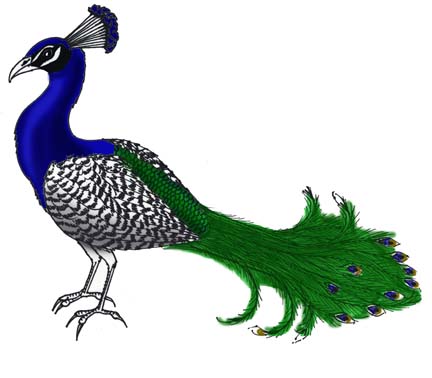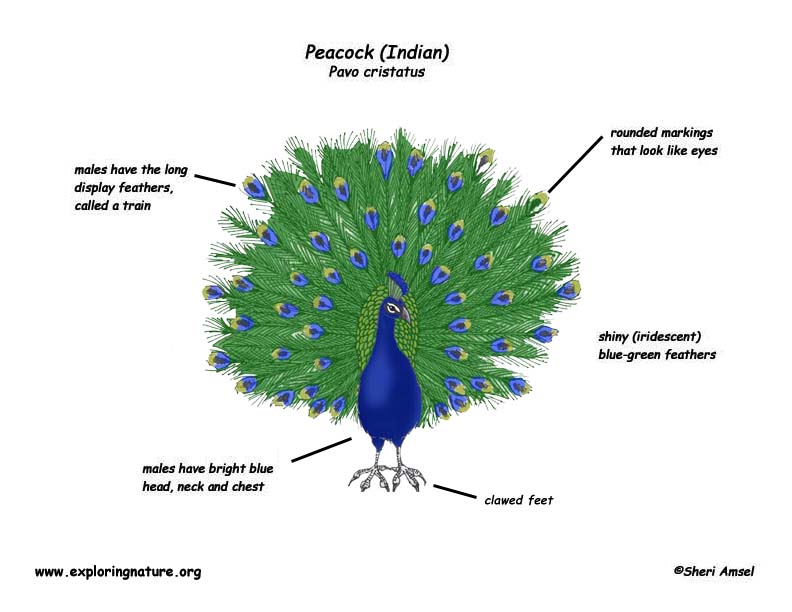

They are found in Pakistan, India and Sri Lanka, but are bred in many places throughout the world domestically.
They live in dry grasslands, scrubby areas and deciduous forests.
Males are called peacocks and are much brighter colored than females with shiny (iridescent) blue-green feathers. They have very long display feathers, called a train, that can reach 3.5 feet long and be spread out like a fan with rounded markings that look like eyes. They are spread to show off for females. These long feathers are not their actual tail but come off their tail coverlets.
They search for food and nest on the ground but sleep (roost) high in the trees.
They are seed eaters, but will also eat insects, fruits and even some small mammals and reptiles.
Males display with their beautiful train feathers to attract a female into their territory. They will mate with several females that come into their territory and do not help raise the young. Each female lays up to 6 eggs in a nest hidden in the bushes. They hatch in about a month.
Kingdom: Animalia
Phylum: Chordata
Class: Aves
Order: Galliformes
Family: Phasianidae
Genus: Pavo
Species: P. cristatus
When you research information you must cite the reference. Citing for websites is different from citing from books, magazines and periodicals. The style of citing shown here is from the MLA Style Citations (Modern Language Association).
When citing a WEBSITE the general format is as follows.
Author Last Name, First Name(s). "Title: Subtitle of Part of Web Page, if appropriate." Title: Subtitle: Section of Page if appropriate. Sponsoring/Publishing Agency, If Given. Additional significant descriptive information. Date of Electronic Publication or other Date, such as Last Updated. Day Month Year of access < URL >.
Amsel, Sheri. "Peacock (Indian)" Exploring Nature Educational Resource ©2005-2024. December 14, 2024
< http://www.exploringnature.org/db/view/211 >

